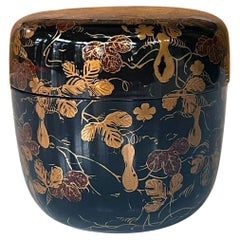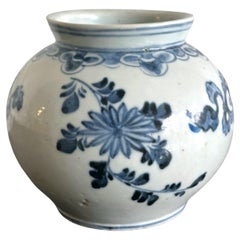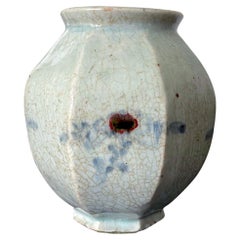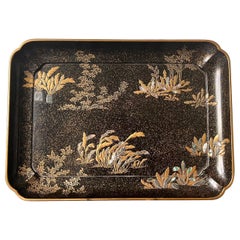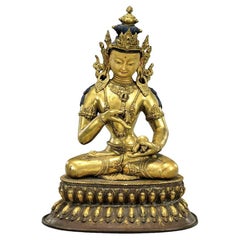Georgia - Asian Art and Furniture
18th Century Japanese Japonisme Antique Georgia - Asian Art and Furniture
Mother-of-Pearl, Lacquer
19th Century Japanese Meiji Antique Georgia - Asian Art and Furniture
Wood, Lacquer
Late 19th Century Korean Other Antique Georgia - Asian Art and Furniture
Porcelain
18th Century Korean Other Antique Georgia - Asian Art and Furniture
Ceramic
19th Century Japanese Japonisme Antique Georgia - Asian Art and Furniture
Wood, Lacquer
19th Century Tibetan Tibetan Antique Georgia - Asian Art and Furniture
Bronze
1640s Chinese Antique Georgia - Asian Art and Furniture
Porcelain
Early 1900s Japanese Japonisme Antique Georgia - Asian Art and Furniture
Brocade, Silk, Wood
Late 19th Century Japanese Meiji Antique Georgia - Asian Art and Furniture
Ceramic
19th Century Korean Other Antique Georgia - Asian Art and Furniture
Brass
Late 19th Century Korean Other Antique Georgia - Asian Art and Furniture
Brass
1850s Japanese Edo Antique Georgia - Asian Art and Furniture
Paper
15th Century and Earlier Korean Archaistic Antique Georgia - Asian Art and Furniture
Ceramic
21st Century and Contemporary American Modern Georgia - Asian Art and Furniture
Stone
1890s Japanese Japonisme Antique Georgia - Asian Art and Furniture
Fabric, Silk, Lucite
19th Century Chinese Chinese Export Antique Georgia - Asian Art and Furniture
Elm, Walnut
19th Century Korean Other Antique Georgia - Asian Art and Furniture
Fabric, Silk, Wood
1880s Japanese Meiji Antique Georgia - Asian Art and Furniture
Ceramic
Late 19th Century Japanese Meiji Antique Georgia - Asian Art and Furniture
Ceramic
Early 19th Century Chinese Chinese Export Antique Georgia - Asian Art and Furniture
Porcelain
Mid-20th Century Japanese Japonisme Georgia - Asian Art and Furniture
Silk
20th Century Korean Other Georgia - Asian Art and Furniture
Brass
Early 2000s Japanese Modern Georgia - Asian Art and Furniture
Ceramic
Early 20th Century Japanese Meiji Georgia - Asian Art and Furniture
Copper
19th Century Korean Other Antique Georgia - Asian Art and Furniture
Brass
Late 19th Century Korean Other Antique Georgia - Asian Art and Furniture
Fabric, Silk, Wood
1870s Japanese Japonisme Antique Georgia - Asian Art and Furniture
Ceramic
15th Century and Earlier Korean Archaistic Antique Georgia - Asian Art and Furniture
Ceramic
Mid-19th Century Korean Other Antique Georgia - Asian Art and Furniture
Mother-of-Pearl, Wood, Lacquer
1880s Japanese Meiji Antique Georgia - Asian Art and Furniture
Ceramic
18th Century Japanese Edo Antique Georgia - Asian Art and Furniture
Mother-of-Pearl, Lacquer
19th Century Korean Other Antique Georgia - Asian Art and Furniture
Iron
19th Century Korean Other Antique Georgia - Asian Art and Furniture
Brass
1960s Chinese Modern Vintage Georgia - Asian Art and Furniture
Porcelain
Late 19th Century Chinese Qing Antique Georgia - Asian Art and Furniture
Silk
Early 2000s Korean Modern Georgia - Asian Art and Furniture
Ceramic
Late 19th Century Japanese Meiji Antique Georgia - Asian Art and Furniture
Ceramic
Early 20th Century Japanese Showa Georgia - Asian Art and Furniture
Silk
19th Century Chinese Chinese Export Antique Georgia - Asian Art and Furniture
Enamel
1890s Japanese Meiji Antique Georgia - Asian Art and Furniture
Silk, Giltwood
19th Century Chinese Qing Antique Georgia - Asian Art and Furniture
Brocade, Silk, Giltwood
Early 19th Century Chinese Qing Antique Georgia - Asian Art and Furniture
Silk
Late 19th Century Korean Other Antique Georgia - Asian Art and Furniture
Brass
20th Century Korean Folk Art Georgia - Asian Art and Furniture
Brocade, Silk, Wood, Paper
1890s Japanese Meiji Antique Georgia - Asian Art and Furniture
Ceramic
19th Century Chinese Chinese Export Antique Georgia - Asian Art and Furniture
Silk, Giltwood
15th Century and Earlier Korean Archaistic Antique Georgia - Asian Art and Furniture
Ceramic
19th Century Korean Other Antique Georgia - Asian Art and Furniture
Metal
16th Century Korean Other Antique Georgia - Asian Art and Furniture
Ceramic
Early 20th Century Japanese Meiji Georgia - Asian Art and Furniture
Ceramic
1920s Chinese Art Deco Vintage Georgia - Asian Art and Furniture
Cotton, Wool
18th Century Korean Archaistic Antique Georgia - Asian Art and Furniture
Ceramic
Early 20th Century Japanese Japonisme Georgia - Asian Art and Furniture
Ceramic
Late 19th Century Japanese Folk Art Antique Georgia - Asian Art and Furniture
Iron
Early 20th Century Japanese Japonisme Georgia - Asian Art and Furniture
Wood, Lacquer
Early 20th Century Burmese Archaistic Georgia - Asian Art and Furniture
Wood, Lacquer
Late 19th Century Japanese Meiji Antique Georgia - Asian Art and Furniture
Ceramic
20th Century American Chinoiserie Georgia - Asian Art and Furniture
Stone
Late 19th Century Japanese Japonisme Antique Georgia - Asian Art and Furniture
Wood, Lacquer
Early 19th Century Chinese Qing Antique Georgia - Asian Art and Furniture
Silk
Read More
Symbols of Happiness and Rebirth Adorn This Japanese Satsuma Bowl
Decorated with white cranes and the sought-after thousand-butterflies motif, the Meiji-period vessel offers both a celebration of traditional aesthetics and a clear reflection of the era’s appetite for exquisite export pieces.
Chicago’s Pagoda Red Has a Spirited Mix of Asian Antiques and Bold New Art
For 25 years, gallerist Betsy Nathan has leveraged her keen eye and key connections to bring a unique selection of rare finds to the market.
In L.A., Gallerist JF Chen Has Long Championed Eclectic Blue-Chip Design
Now working alongside his daughter Bianca, dealer Joel Chen has presented a most covetable array of antiques, art and contemporary creations for more than 40 years.
12 Calming Spaces Inspired by Japanese Design
From cherry-blossom-adorned walls paired with glamorous lighting to wood-paneled ceilings above checkerboard-patterned chairs, these 12 spaces seamlessly blend Eastern and Western aesthetics.
Rodrigo Rivero Lake’s Mexico City Showroom Is a Museum-Worthy Trove of Spanish Colonial and Asian Antiques
The dealer and curator has spent the past 50 years amassing a collection of exceptional art, furniture and architectural elements that trace the cultural influence of the Spanish empire from Europe to the Americas and beyond.
16 Refined Asian-Inspired Interiors
These spaces exemplify how Eastern elements elevate a home's decor.

